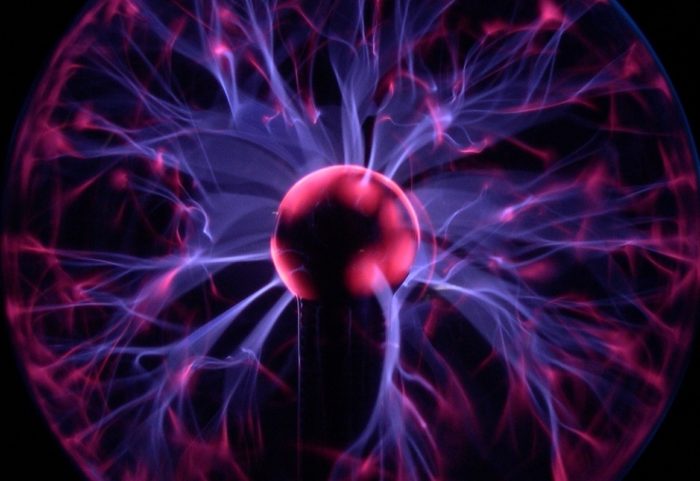 Science is fun, interesting, and empowering, but it is also hard, especially at advanced levels. Even at a basic level, science forces you to think clearly, precisely, logically, and objectively. It therefore challenges our preconceptions, our biases, our hopes and desires and replaces these things with indifferent reality. Science becomes progressively tricky the more advanced it becomes, requiring an increasing fund of knowledge and mastery over subtle concepts and technical skills in order to be able to take the next step. At the cutting edge of science, nothing short of years of dedicated study is necessary to engage meaningfully with the enterprise of advancing human scientific knowledge. You also have to be able to engage productively with a community of scientists, all picking apart each other’s work.
Science is fun, interesting, and empowering, but it is also hard, especially at advanced levels. Even at a basic level, science forces you to think clearly, precisely, logically, and objectively. It therefore challenges our preconceptions, our biases, our hopes and desires and replaces these things with indifferent reality. Science becomes progressively tricky the more advanced it becomes, requiring an increasing fund of knowledge and mastery over subtle concepts and technical skills in order to be able to take the next step. At the cutting edge of science, nothing short of years of dedicated study is necessary to engage meaningfully with the enterprise of advancing human scientific knowledge. You also have to be able to engage productively with a community of scientists, all picking apart each other’s work.
It’s for these reasons that there is a lot of bad science out there. There are also those who prioritize things other than the pursuit of scientific knowledge, such as money, fame, or advancing an ideology. Many people mean well, but simply get the science wrong. Even successful scientists can make egregious errors, stubbornly stick to false ideas, or let their own ideology get in the way. So what is the average science enthusiast to do? Unless you have a fairly high level of scientific expertise in general and also in a specific field, you cannot hope to engage with the cutting edge of that field. To some extent, you have to trust the experts, but what if the experts disagree, or some of them are just wrong?
There is no easy answer to this, but there are skills and methods other than actual expertise in a specific field that can help a layperson have a pretty good idea which experts to listen to. This requires some scientific literacy, especially about how proper science operates. It also requires a certain amount of critical thinking skills – knowing something about logic, self-deception, and the nature of evidence. Further, we can learn to recognize the different types of pseudoscience and pseudoscientific behaviors, which can act as reliable red-flags to help spot fake science. Recently promoters of the Electric Universe have appeared in the comments to this blog, and this is a good opportunity to review these red flags.
The idea of the electric universe (EU) is that electromagnetism actually does most of the large-scale heavy lifting when it comes to the structure of the cosmos, displacing gravity as the main long-distance force. There are different flavors of EU, with some doing away with gravity completely, and others allowing for some gravity (to help explain phenomena EU can’t) but still relegate it to a minor role. One major example is that EU proponents believe stars are fueled by electromagnetism, and not by gravity-induced fusion. Here are two great videos that give a concise summary of the history of EU belief and why it is complete and utter nonsense. But I will review the major problems with EU and use them as examples of crank pseudoscience.
Crank pseudoscience is a flavor of pseudoscience that operates at a technically sophisticated level, but is missing some of the key elements of actual science that doom proponents to absurdity. But it also contains many of the generic features of pseudoscience. Let’s review, starting with features more typical of crank pseudoscience.
Does not engage meaningfully with the scientific community.
Science is a collaborative effort, especially at the advanced cutting edge level. This is because it is so difficult at this level, you need the self-corrective process of peer-review, rejection of error, criticism of wrong ideas, challenges for evidence and by alternative theories, etc. Without this self-corrective process, fringe groups or individuals tend to drift off from reality into a fantasy land of their own creation, although gilded with the superficial trappings of science. EU proponent Montgomery Childs exemplifies this in an interview (in the second video above) when he tries lamely to justify not bothering to publish any of his findings in scientific journals. Actual experts in plasma physics and cosmology therefore just ignore his fringe work – unless they have data to look at, they don’t have much of a choice. This is a core feature of crank pseudoscience – cranks tend to toil alone or in small fringe echochambers and not engage with proper experts.
Work outside their actual area of expertise (if they have one).
Often we see scientists or engineering getting into crank science when they venture beyond their specific area of expertise. Sometimes this is just hubris – in fact we joke about the Nobel Prize effect, where some Nobel Prize winners go on to support pseudoscience later in their career. There is also an aging-scientist effect where researchers toward the end of their career start looking at their legacy, or lack of one, and want to make a big splash somewhere. Some choose a small fringe pond where their credentials make them a big fish, and start promoting nonsense. The problem, of course, if that being an expert in one area does not equip you to contradict actual experts in a separate field. Electrical engineers are not cosmologists or physicists. It is therefore helpful to see what the most appropriate experts say about a theory, not just anyone with letters after their name. Actual experts reject the EU as completely nonsense (with good reason), and its proponents are all in unrelated fields.
Make grandiose claims while minimizing actual scientific knowledge.
The EU claims to overhaul much of science, which is itself a red flag. It is hard to prove that established science is all wrong, and it’s getting harder as science advances and the foundational concepts of science are increasingly supported by evidence and derivative theories. What cranks often do is grossly exaggerate what is currently unknown in a scientific field, or the meaning of anomalies, and they downplay what is known with confidence. This often become simply lying, making boldly false claims about the state of the science. EU proponents, for example, ignore or deny the evidence for the Big Bang, black holes, stellar fusion, and gravity. The claim that they have overturned pretty much all of astrophysics, stellar astronomy, General Relativity, and more – all on the flimsiest of pretexts. In other words, they reject theories supported by a mountain of evidence, and replace them with theories that have (at best) an ant hill.
They don’t actually explain 0r predict anything.
Another core feature of science is that it makes testable predictions. What this means is that there has to be some way to determine if one theory is more correct than another, because they make different predictions about what we will observe in the universe or the result of experiments. Scientific theories also should have explanatory power (it can explain what we see) – but this is actually necessary but insufficient feature of science. Astrology has explanatory power – if you are willing to just make up BS explanations for stuff. It’s easy, and pattern-seeking humans are good at, finding explanations of stuff. The problem with EU is that it really does neither – predict or explain. In fact, shifting from current cosmological theories to EU would be a massive step backwards. EU cannot explain a ton of established phenomena that are well explained by current theories, such as the evidence for black holes or dark matter, the lifecycle of stars, the existence of neutrinos from stellar fusion, and many more. There are also fundamental problems with EU, such as the known behavior of electromagnetism and charged particles. What EU proponents do, rather, is simply hunt for patterns, and then make very superficial connections between some aspect of EU theory and some astronomical phenomenon.
This is what triggered some of the comments – the regular rings of dust found around WR140, caused by the periodicity of the wind-binary star system. EU proponents said – look, concentric rings. We see those in the plasma dohickey thing. They then count that as a “prediction” when it was actually just retrofitting, and not very well. They falsely call the rings “perfect” when it is the very imperfections in the rings that can be accounted for by the astronomical explanation.
Portray the scientific community as a conspiracy of the small-minded.
If you have a nonsensical fringe theory and don’t publish your findings (except in fringe journals created for that purpose), it’s likely that the broader scientific community with ignore or reject your claims. They should – you have not earned their assent by demonstrating your claims with objective and publicly available evidence. When that happens, cranks universally claim they are the victim of a conspiracy. They don’t self-correct, address legitimate criticisms, recognize the shortcomings of their theories, do better experiments or, in short, engage in legitimate science. They cry foul. They say something to the effect that “mainstream” science is all a conspiracy, and scientist are simply too dumb or too scared to recognize their towering genius. This is the point that self-comparisons to Galileo or Einstein are typically brought out.
EU proponents do this in spades. There is a large, vibrant, world-wide community of astrophysicists, all at different parts of their career, in different countries and institutions, just trying to figure out how the universe works and hopefully make a name for themselves doing so. Yet a few fringe scientists, without the proper expertise, allege they have proven all of them hopelessly wrong, because they are all biased or don’t know what they are doing. And they are stubbornly not convinced by silly superficial evidence its proponents won’t bother to publish. Imagine!
 Imagine injecting microscopic robots into a patient that then can be guided to a specific location in the body where they deliver drugs or stem cells for therapy. This technology is actually not far off. Researchers have been developing multiple types of tiny medical robots, and some have been used successfully in animals.
Imagine injecting microscopic robots into a patient that then can be guided to a specific location in the body where they deliver drugs or stem cells for therapy. This technology is actually not far off. Researchers have been developing multiple types of tiny medical robots, and some have been used successfully in animals.
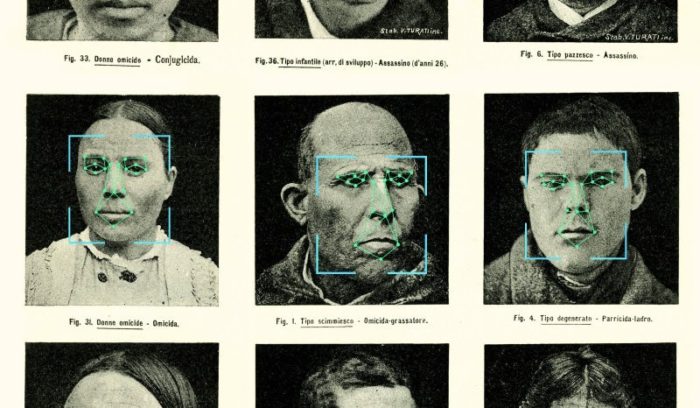 Humanity has an uncanny ability to turn any new potential boon into con. The promise of stem cell technology quickly spawned fraudulent stem-cell clinics to exploit the desperate. There is snake oil based on lasers, holograms, and radio waves. Any new tech or scientific discovery becomes a marketing scam, going back to electromagnetism and continuing today with “nanotechnology”. There is some indication that artificial intelligence (AI) will be no exception.
Humanity has an uncanny ability to turn any new potential boon into con. The promise of stem cell technology quickly spawned fraudulent stem-cell clinics to exploit the desperate. There is snake oil based on lasers, holograms, and radio waves. Any new tech or scientific discovery becomes a marketing scam, going back to electromagnetism and continuing today with “nanotechnology”. There is some indication that artificial intelligence (AI) will be no exception. Science is fun, interesting, and empowering, but it is also hard, especially at advanced levels. Even at a basic level, science forces you to think clearly, precisely, logically, and objectively. It therefore challenges our preconceptions, our biases, our hopes and desires and replaces these things with indifferent reality. Science becomes progressively tricky the more advanced it becomes, requiring an increasing fund of knowledge and mastery over subtle concepts and technical skills in order to be able to take the next step. At the cutting edge of science, nothing short of years of dedicated study is necessary to engage meaningfully with the enterprise of advancing human scientific knowledge. You also have to be able to engage productively with a community of scientists, all picking apart each other’s work.
Science is fun, interesting, and empowering, but it is also hard, especially at advanced levels. Even at a basic level, science forces you to think clearly, precisely, logically, and objectively. It therefore challenges our preconceptions, our biases, our hopes and desires and replaces these things with indifferent reality. Science becomes progressively tricky the more advanced it becomes, requiring an increasing fund of knowledge and mastery over subtle concepts and technical skills in order to be able to take the next step. At the cutting edge of science, nothing short of years of dedicated study is necessary to engage meaningfully with the enterprise of advancing human scientific knowledge. You also have to be able to engage productively with a community of scientists, all picking apart each other’s work.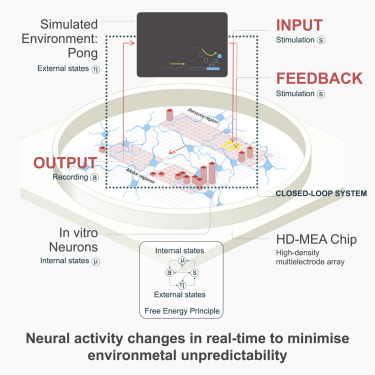 This is definitely the neuroscience news of the week. It shows how you can take an incremental scientific advance and hype it into a “new science” and a breakthrough and the media will generally just eat it up. Did scientists teach a clump of brain cells
This is definitely the neuroscience news of the week. It shows how you can take an incremental scientific advance and hype it into a “new science” and a breakthrough and the media will generally just eat it up. Did scientists teach a clump of brain cells  One day it may turn out that a potential sign of alien technology (technosignature) turns out to be just that. That is the best hope of finding evidence for life outside our solar system in my lifetime. But that day has not yet arrived, and another potential candidate (although this one was pretty weak) has found a natural explanation.
One day it may turn out that a potential sign of alien technology (technosignature) turns out to be just that. That is the best hope of finding evidence for life outside our solar system in my lifetime. But that day has not yet arrived, and another potential candidate (although this one was pretty weak) has found a natural explanation.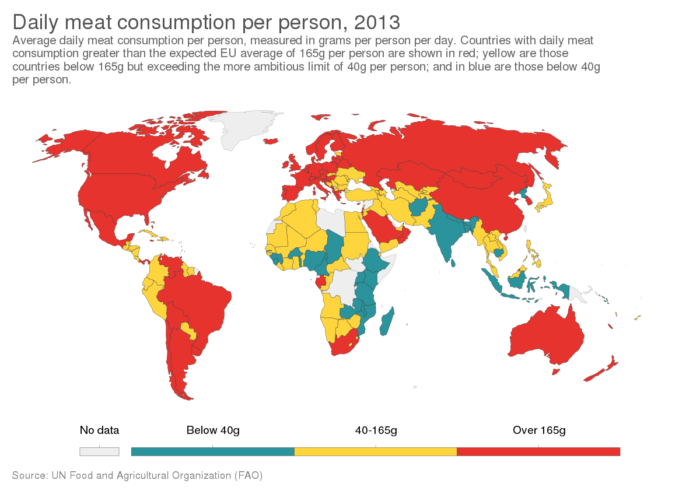 This is one of those complex questions that comes up frequently when talking about related issues, and it’s always challenging to give a short answer. Often there are unknown or speculative elements to the analysis, which make it difficult to have an objective or definitive answer. What I would like to do here is mostly frame the relevant considerations and give my current understanding of the evidence, with possible caveats. Obviously this is going to be a quick overview of a lot of complexity – I see it more as a starting point than a firm conclusion.
This is one of those complex questions that comes up frequently when talking about related issues, and it’s always challenging to give a short answer. Often there are unknown or speculative elements to the analysis, which make it difficult to have an objective or definitive answer. What I would like to do here is mostly frame the relevant considerations and give my current understanding of the evidence, with possible caveats. Obviously this is going to be a quick overview of a lot of complexity – I see it more as a starting point than a firm conclusion.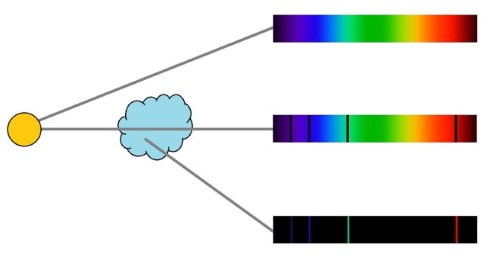 I still find it amazing that we can look at an astronomical object light years away and determine its chemical composition in detail. This is referred to as spectral analysis – looking at either absorption or emission lines in the wavelengths of light.
I still find it amazing that we can look at an astronomical object light years away and determine its chemical composition in detail. This is referred to as spectral analysis – looking at either absorption or emission lines in the wavelengths of light. 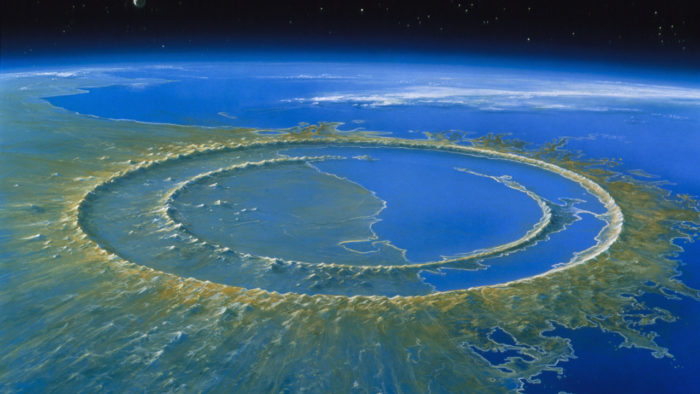 At this point there is little question that a giant asteroid, 10 kilometers across, impacted the Earth about 66 million years ago. Evidence for this impact began with an iridium layer discovered at the Cretaceous-Paleogene, or K-Pg, boundary. Something deposited an unusually high level of iridium in a brief event all around the world. Later the likely crater resulting from this impact was found in Chicxulub, Mexico. Multiple other discoveries have supported this conclusion, including the fact that this impact was the likely cause of the dinosaur extinction. There was also massive volcanic activity at that time, and dinosaur populations may have been in decline, but that was likely a side show. The main event was the impact.
At this point there is little question that a giant asteroid, 10 kilometers across, impacted the Earth about 66 million years ago. Evidence for this impact began with an iridium layer discovered at the Cretaceous-Paleogene, or K-Pg, boundary. Something deposited an unusually high level of iridium in a brief event all around the world. Later the likely crater resulting from this impact was found in Chicxulub, Mexico. Multiple other discoveries have supported this conclusion, including the fact that this impact was the likely cause of the dinosaur extinction. There was also massive volcanic activity at that time, and dinosaur populations may have been in decline, but that was likely a side show. The main event was the impact.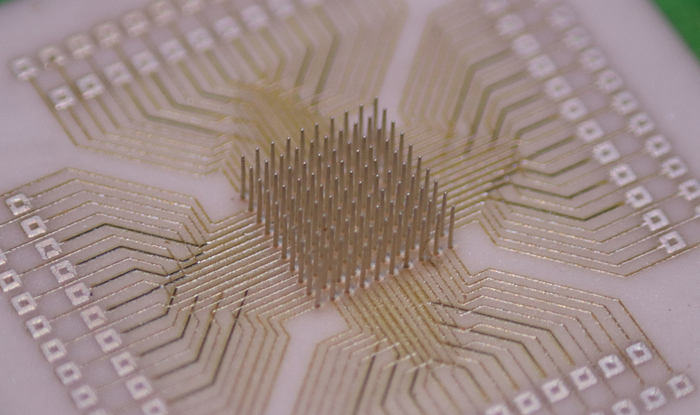 This is definitely a “you got chocolate in my peanut butter” type of advance, because it combines two emerging technologies to create a potential significant advance.
This is definitely a “you got chocolate in my peanut butter” type of advance, because it combines two emerging technologies to create a potential significant advance. 





